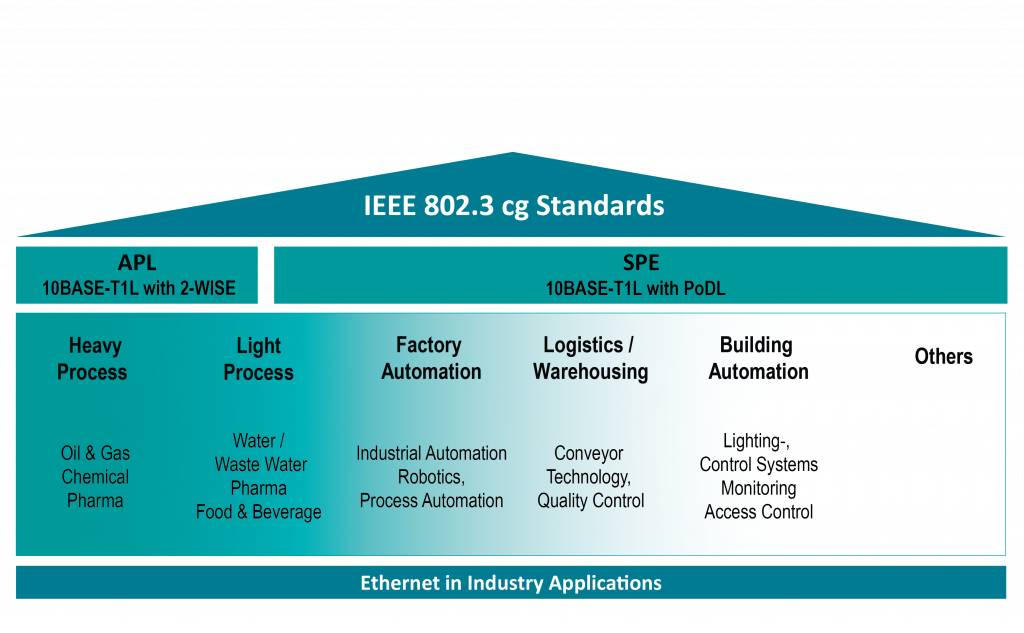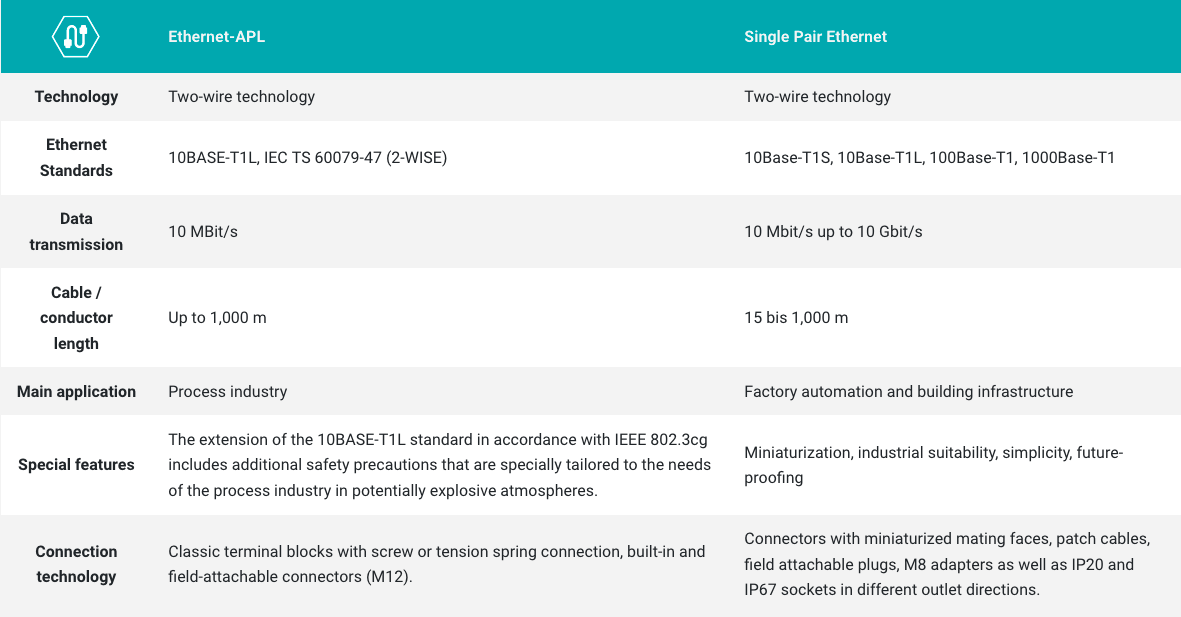Advanced Physical Layer – The principle
Communication for the process industry from the sensor to the cloud.
Advanced Physical Layer – The principle
COMMUNICATION FOR THE PROCESS INDUSTRY FROM THE SENSOR TO THE CLOUD.

With the IEEE 802.3cg standard, the Institute of Electrical and Electronics Engineers (IEEE) created an international standard for Ethernet transmissions via twisted pair cables in 2019. The standard defines the parameters for data transmission via a single pair of wires with a maximum length of 1,000 meters in an industrial environment.
In addition to Single Pair Ethernet (SPE), IEEE 802.3cg also defines the Ethernet Advanced Physical Layer (Ethernet-APL) communication standard. Just like SPE, Ethernet-APL enables end-to-end, intelligent networking across all levels of the automation pyramid, from the sensor to the cloud. While SPE is mainly used in factory automation and building infrastructure, Ethernet-APL was developed specifically for the requirements of process automation.
| Ethernet-APL | Single Pair Ethernet | |
|---|---|---|
| Technology | Two-wire technology | Two-wire technology |
| Ethernet Standards | 10BASE-T1L, IEC TS 60079-47 (2-WISE) | 10Base-T1S, 10Base-T1L, 100Base-T1, 1000Base-T1 |
| Data transmission | 10 MBit/s | 10 Mbit/s up to 10 Gbit/s |
| Cable / conductor length | Up to 1,000 m | 15 bis 1,000 m |
| Main application | Process industry | Factory automation and building infrastructure |
| Special features | The extension of the 10BASE-T1L standard in accordance with IEEE 802.3cg includes additional safety precautions that are specially tailored to the needs of the process industry in potentially explosive atmospheres. | Miniaturization, industrial suitability, simplicity, future-proofing |
| Connection technology | Classic terminal blocks with screw or tension spring connection, built-in and field-attachable connectors (M12). | Connectors with miniaturized mating faces, patch cables, field attachable plugs, M8 adapters as well as IP20 and IP67 sockets in different outlet directions. |
